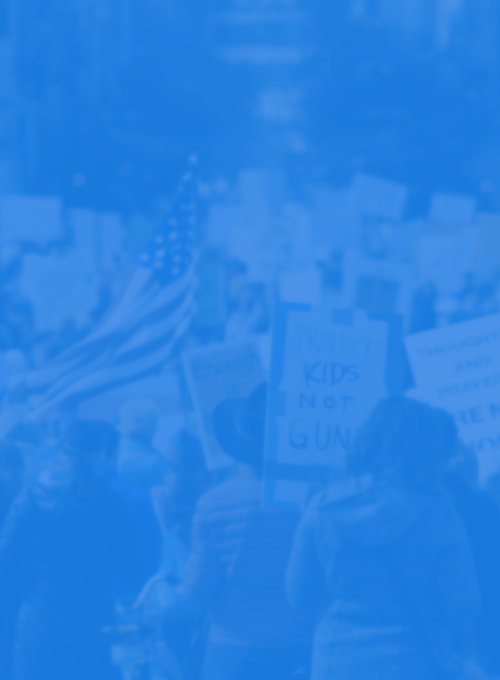Minnesota
The latest Minnesota annual gun death data.
READ THE GUIDEEXPLORE THE FULL REPORTMORE STATE ADVOCACY RESOURCES
525 Gun Deaths in Minnesota
Based on most recent available finalized data from CDC (2023).
128
HOMICIDES
379
SUICIDES
18
OTHER
21
YOUNG PEOPLE (1-17)
Key Takeaways
The overall gun death rate increased by 35% from 2014 to 2023.
Minnesota had the 8th lowest gun homicide rate in the country in 2023. However, the percent increase in gun homicides from 2014 to 2023 was the 6th highest in the country.
In 2022, there were at least 51 domestic violence-related homicides in Minnesota. 41% were by firearm.
Firearms were the fourth leading cause of death among young people ages 1-17 in 2023.
Policies to Reduce Gun Violence in Minnesota
A policy roadmap to assist Minnesota legislators in reducing gun violence in the state.
County Firearm Death Data
This map shows county-level firearm death data from 2020–2024. Users can filter to view overall firearm deaths, firearm homicides, or firearm suicides. Death counts reflect the total number of deaths between 2020–2024 while rates represent the average annual rate during this period. The map includes finalized CDC mortality data through 2023 and preliminary data for 2024, providing a snapshot of COVID-era and post-COVID trends. All data comes from CDC WONDER.*
An average of one person killed every seventeen hours.
Gun violence cost Minnesotans $6 billion annually.
This amounts to $1,042 per person.
Firearm Homicide in Minnesota
4X
Males were four times as likely to die by gun homicide than females.
26X
Black people were 26 times as likely to die by gun homicide than their white counterparts.
40%
Young Black males ages 15-34 made up 1.2% of the state’s population but accounted for 40% of all gun homicide deaths in 2023.
17X
American Indian/Alaska Native people were 17 times as likely to die by gun homicide than their white counterparts from 2019 to 2023.
Firearm Suicide in Minnesota
10X
Males were 10 times as likely to die by gun suicide than females.
65%
White males over the age of 34 accounted for 23% of the population in Minnesota but nearly two-thirds (65%) of all gun suicide deaths in 2023.
44%
44% of all gun suicide deaths in 2023 were over the age of 54.
Guns are used in the majority of homicides.
Sources: Centers for Disease Control and Prevention. National Center for Health Statistics. Underlying Cause of Death. Age-adjusted Gun Deaths and Rates per 100,000. WONDER Online Database, 1999-2023; & WISQARS. National Violent Death Reporting System (NVDRS) and Cost of Injury Modules. 2022
*CDC WONDER data limitations:
- Map results are labeled “unreliable” when there are fewer than 20 deaths.
- Map data are suppressed (not shown) for counties with fewer than 10 deaths.
- Map totals may include "other" gun deaths that are not reflected in homicide or suicide totals.
Minnesota’s Extreme Risk Protection Order Law
Minnesota's Extreme Risk Protection Order (ERPO) Law Implementation Guide, by the Center and the Violence Prevention Project Research Center at Hamline University in Saint Paul, MN, is designed for law enforcement officers, attorneys, judges, mental & behavioral health professionals, public health practitioners, suicide prevention and gun violence prevention advocates, and others in Minnesota to understand the ERPO law.
Extreme Risk Protection Order

An Extreme Risk Protection Order (ERPO) is a civil order that may be issued when a person poses a significant risk to self or others by having a firearm in their custody. ERPOs prohibit said person from possessing or purchasing firearms. In Minnesota, law enforcement, city/county attorneys, guardians, and family or household members may petition for an ERPO. Visit ERPO.org for more information on MN's ERPO law.
Factsheet: Gun Violence in Minnesota

Download and share our state factsheet on the most recent CDC data on gun violence in Minnesota.
DOWNLOAD THE FACTSHEETLEARN MORE ABOUT OUR ADVOCACY EFFORTSMORE STATE ADVOCACY RESOURCES


